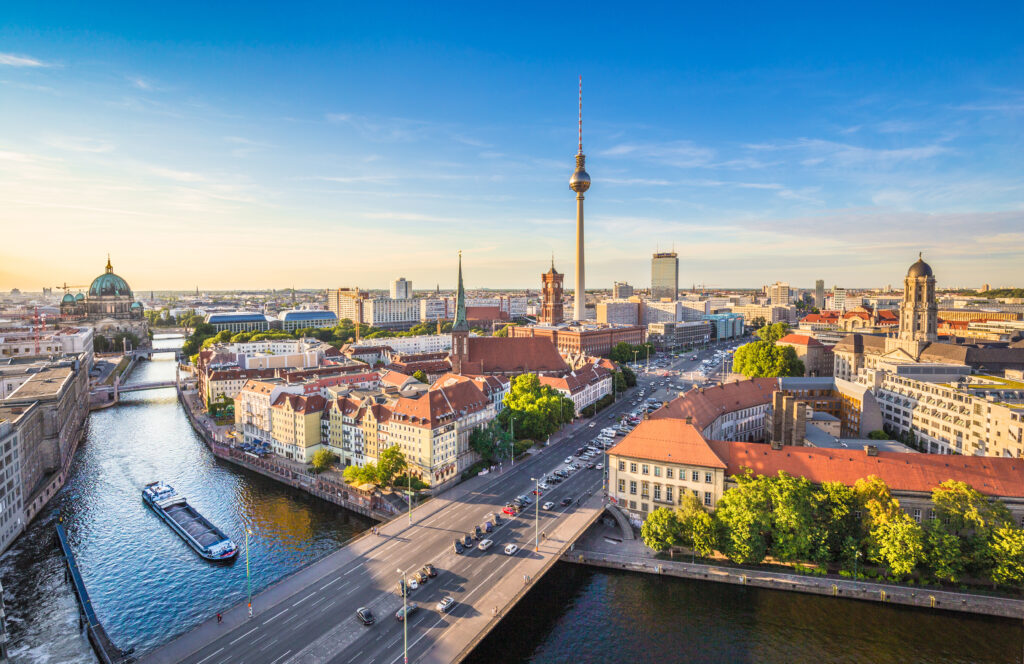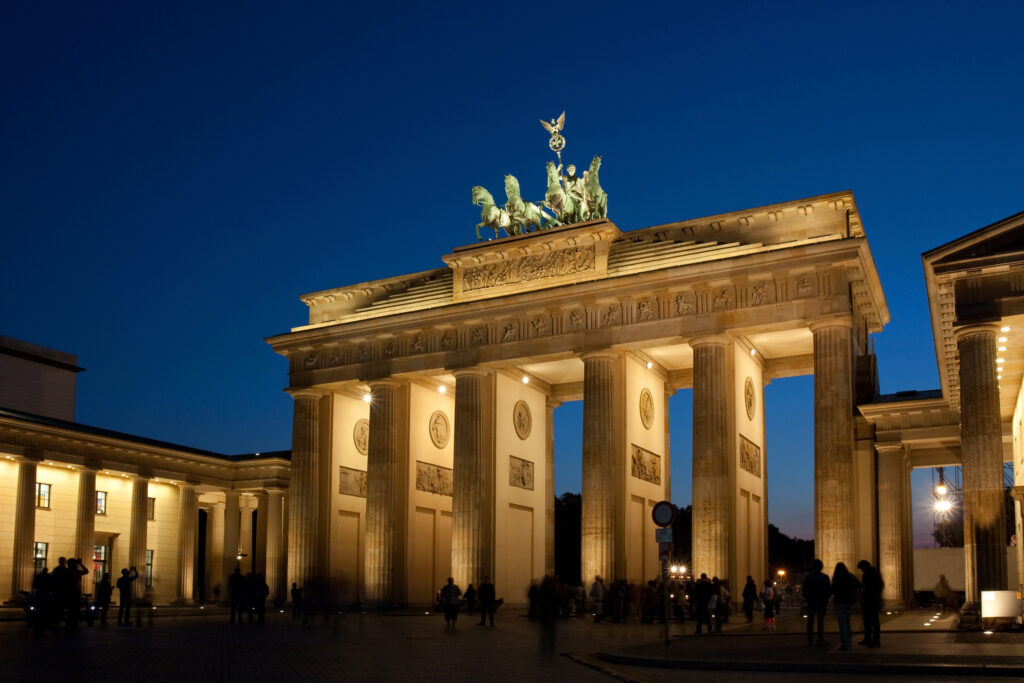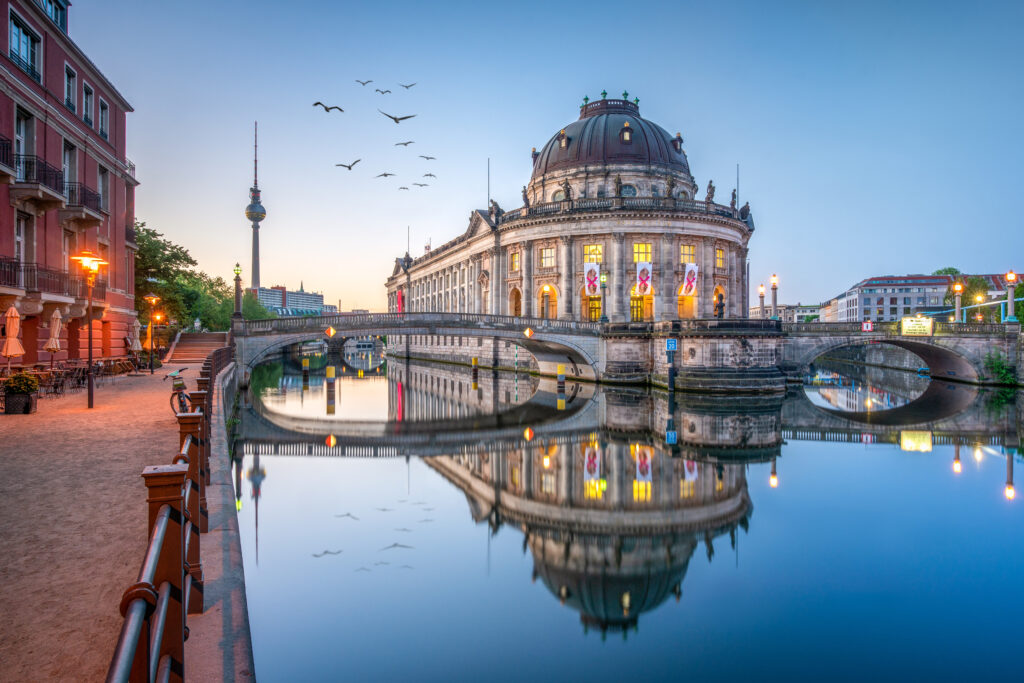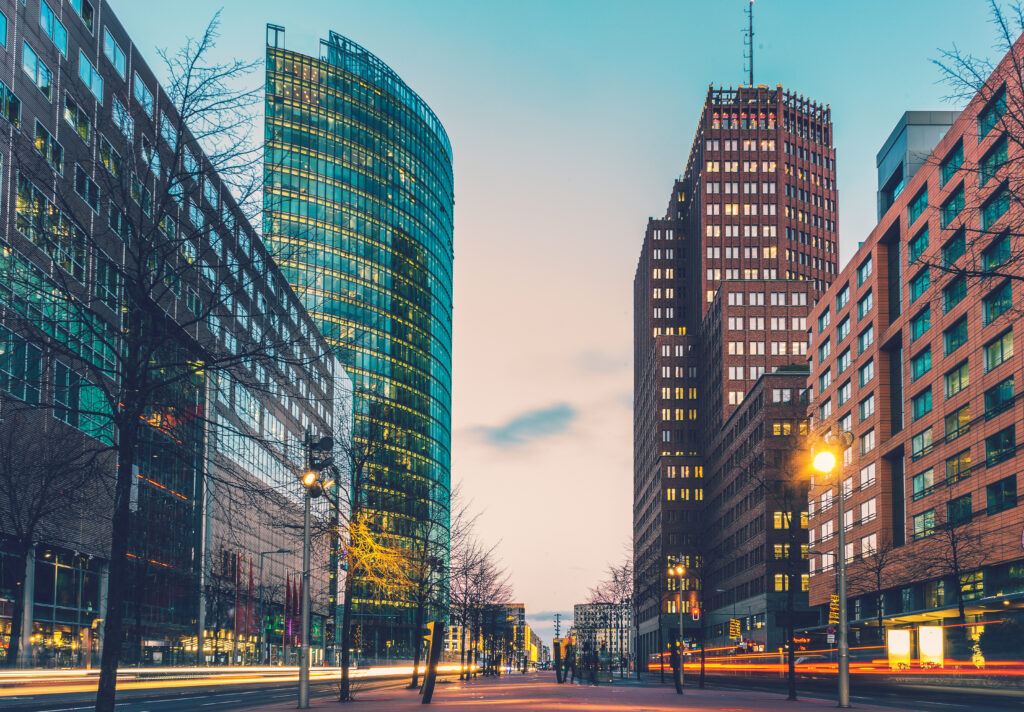
Berlin, Germany's capital with its tumultuous past, is a fascinating destination for history buffs. As you stroll its streets, you'll witness the indelible traces left by major historical events. For a complete immersion experience, we suggest a three-day historical tour, including museums, monuments and emblematic sites such as the famous concentration camps. To facilitate your discovery, the Berlin Pass, a low-cost tourist pass, will open the doors to numerous attractions and make it easier for you to get around.
Berlin is also known for its cultural diversity and abundance of entertainment. For the best experience, we suggest learning a few words in German, the official language, although many tours are also available in English. Among the must-sees, don't miss a visit to the Brandenburg Gate or a dive into the history of the Berlin Wall. Get ready to explore all this dynamic city has to offer with our detailed guide, ideal for a three-day stay.
Day 1: A tour from the Brandenburg Gate to the Cathedral

1. Visit the Brandenburg Gate
A trip to Berlin is the perfect opportunity to visit the Brandenburg Gate, once the city's main entrance. It is located on Pariser Platz, making it an excellent starting point for exploring the city's best districts. It stands out for its historical value. Interestingly, the original structure was built in 1791, but was partially destroyed during the Second World War and restored in 1969.
As one of the most visited monuments, it's best to visit in the low season, from March to November. Another option is to take advantage of a free morning tour, allowing you to take photos away from the crowds. Alternatively, if you're looking for things to do in Berlin in October, you can take advantage of the Festival of Lights: a free annual event that illuminates all of Germany's monuments.
2. Visit the historic Reichstag building
Berlin is a city of historic buildings, so buying tickets for the Reichstag is an excellent decision. The Reichstag is the seat of the German Parliament, and is considered an architectural landmark of the capital. It's well worth taking a look inside, as admission is free. Please note that reservations must be made in advance, and we recommend that you take advantage of the audio guides and tours that tell the history of the building in detail.
The most interesting part of the building is the glass dome, which houses a photographic exhibition. Alternatively, if you want to enjoy the best views in Berlin, we recommend a visit to the Parliament Terrace. Although the views are not comparable to the experience of buying tickets for the TV tower, the advantage is that there are fewer tourists.
3. See Berlin's Jewish Museum
The Jewish Museum is one of the best museums in Berlin, and one of the largest in Europe. It was built in 1999 and offers free access to the permanent exhibition, the displays in the Libeskind building and the children's museum - ideal if you're looking for things to do in the city with children. On the other hand, temporary exhibitions in the old building start at 8 euros.
It's the ideal place to discover Jewish life in Germany, through art installations, immersive experiences and works by international artists. The museum has a downloadable app with an audioguide containing valuable information to help you complete your visit. To round off the visit, you can also arrange things to do in the Jewish Quarter.
4. Marvel at Berlin Cathedral
Berlin Cathedral or Berliner Dom is a religious building with a representative architectural history. Years ago, it was the burial place of royalty, due to its privileged location. In fact, the Hohenzollern crypt, a sarcophagus containing over 90 tombs, is located here. Curiously, for reasons unknown, it has never had a Catholic bishop.
You can climb the dome to admire the view over Berlin, although it's a real challenge to climb the 270 steps. Admission costs 10 euros per person, but it's cheaper to use the Berlin Welcome Card, which costs 7 euros and includes public transport and over 200 attractions.
Day 2: Discover the art of Berlin's museums and Old Town

1. Stroll around Museum Island
In Berlin's historic center, you'll find the interesting Museum Island. This UNESCO World Heritage-listed museum complex features five of the city's finest museums. Here you'll find galleries and buildings from the Prussian monarchs, although most of them were destroyed during the Cold War and rebuilt over time. More specifically, when you buy tickets for Museum Island, you'll have access to the following museums:
- The Pergamon Museum: the city's most visited museum, here you'll find collections of Islamic, Greek and Roman art, such as the Gate of Ancient Babylon. It is currently closed for renovation.
- The Neues Museum is a landmark museum that was closed for 70 years after its destruction during the Second World War. For a long time, only its ruins were visible, but today it exhibits archaeological finds and Egyptian mummies. It also features the 3,000-year-old sculpture of Nefertiti, as well as temporary exhibitions. We recommend buying tickets for the Neues Museum in advance, from 17 euros, as it is often very busy.
- Berlin's former National Gallery: houses paintings from the 19th century, as well as French Impressionism and Realism. Tickets start at 12 euros.
- Bode Museum: one of Berlin's best museums if you want to appreciate local and international art. You'll find sculptures from all over the world, as well as over 4,000 collectible coins and medals. Tickets start at 10 euros.
- The Old Berlin Museum: located next to Berlin Cathedral, this is an excellent place to discover Greek myths and ancient excavations. For years, it housed the bust of Nefertiti, which was transferred to the Neues Museum a few years ago. Tickets start at 10 euros.
2. Stroll around Alexanderplatz
If you're planning to visit Berlin's best districts, you'll want to pass through the most central area, where Alexanderplatz square is located. It belonged to Communist Germany when the country was divided. It was here that the demonstrations of November 4, 1989 took place, forming a key movement for the demolition of the Berlin Wall.
It's a very touristy place surrounded by the Television Tower, which offers the best local views. We recommend buying tickets in advance, as it's well worth it, as you'll be 368 meters above sea level and can visit the revolving restaurant. You can also see the Berlin World Clock, which tells the time in every city in the world, and the Marienkirche church, which dates back to 1380.
3. Cycling in Berlin
Berlin is a cyclist's paradise, with largely flat streets and no hills or bends, making it easy to get around by bike. A tour on this environmentally-friendly mode of transport will give you a first glimpse of the German capital. You can rent a bike on your own or take advantage of the best local bike tours offering a guided experience.
The usual itinerary for a bike tour usually includes museums, famous monuments, squares and much more. In Berlin, special bike paths and signposts make it easy to reach your destination. Please note that it is forbidden in Germany to ride while listening to music or talking on the phone. If it's your first time in the capital, it's best to book a bike tour to enjoy a guided experience from around 22 euros per person.
Day 3: A journey through Berlin's past and present

1. Discover the history of the Berlin Wall
The Berlin Wall, also known as the Wall of Shame, is a time portal to one of Germany's most painful histories. If you're planning to spend at least three days in the city, we recommend taking a historical itinerary to discover the places where fragments of this structure are preserved. Bear in mind that it was built in a single night, to establish capitalist Germany and communist Germany, abruptly separating thousands of families for 28 years.
It was destroyed in 1989, but its existence can still be seen at the Berlin Wall Memorial :
- Berlin Wall Memorial Museum: this is one of the best local museums, as it was built on the exact site of the wall. Here you'll find the "death strip", where many people died trying to cross from one side of the wall to the other. You'll also find the Watchtower and fragments of the original structure.
- The ghost stations: under the wall were train lines that worked, but had to pass through closed German stations. If they took longer than expected to make the journey, fugitive searches were organized and the locomotive was condemned to death. An exhibition on the theme of walls can be seen at Nordbahnhof station.
- Checkpoint Charlie: this was one of the most important border crossings during the division of Germany. Germans were allowed to cross from East to West Berlin on a visa with several restrictions. In fact, from here, you can also see fragments of the original wall.
- Freedom tunnels: these tunnels, located under Bernauer Strasse, enabled Germans to escape. Here you can see commemorative plaques showing the number of people who managed to escape.
- East Side Gallery: if you're planning to enjoy the best bike tours in Berlin, you need to stop off at the world's largest open-air gallery. The largest number of fragments of the Wall are preserved here, as well as murals by international artists.
- Windows of Remembrance: a tribute to the victims, featuring the immortalized stories of those who tried to cross the wall. The Cherry Blossom Trail: to soften the scars left by the Berlin Wall, the Japanese government has laid out a magnificent cherry blossom trail at the Bösebrücke crossroads.
2. Take the opportunity to explore Potsdamer Platz
Potsdamer Platz is a must-see, located in one of the city's most modern districts. Here you'll find the Haus Huth building, which survived the bombings of the Second World War. You'll also find fragments of the Grand Hotel Esplanade, where you can discover the lifestyle of the German upper class before the war.
You can also stop off at the Sony Center business center and enjoy the changing lights of its dome. The Kollhoff Tower, home to the Panoramapunkt observation deck, is a must-see. Tickets start at 9 euros per person. If you're looking for things to do in Berlin in February, you can take advantage of the Berlinale, the international film festival that takes place on the square every year.
3. Visit the Sachsenhausen concentration camps
The Sachsenhausen concentration camps are a painful but essential journey back in time to learn more about the city's wartime history. Built during the time of Nazi Germany, they served as detention centers where political prisoners were tortured. Tours of the Sachsenhausen concentration camp are available from Berlin for around €30 per person.
It was common practice for human experiments to be carried out on this site, and it was precisely because of this atrocious torture that it was completely dismantled around 1950. However, in order to illustrate the history for visitors, some parts have been rebuilt:
- Tower A or watchtower.
- The punishment cells.
- The infirmary and morgue.
- The central courtyard.
- Monuments to victims.
- Barracks 38 and 39, now a Resistance museum.


